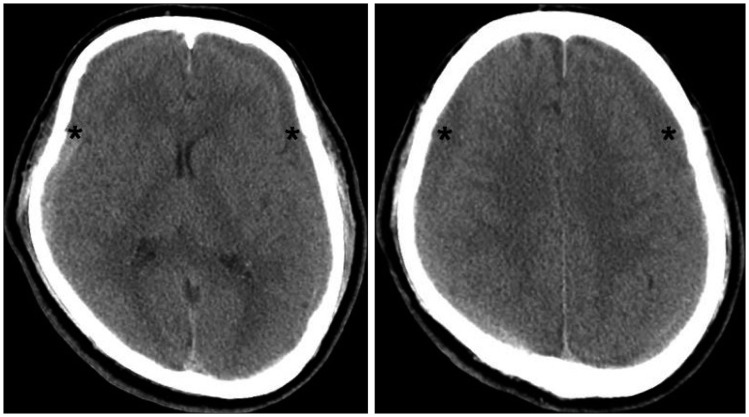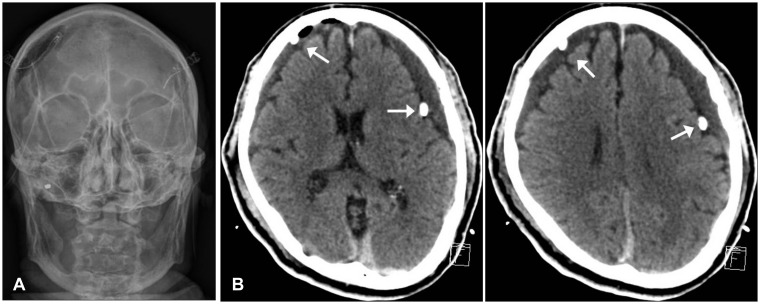Korean J Neurotrauma.
2015 Oct;11(2):144-146. 10.13004/kjnt.2015.11.2.144.
Fatal Post-Operative Epilepticus after Burr-Hole Drainage for Chronic Subdural Hematoma
- Affiliations
-
- 1Department of Neurosurgery, Wonkwang University School of Medicine, Iksan, Korea. kseom@wonkwang.ac.kr
- KMID: 2378274
- DOI: http://doi.org/10.13004/kjnt.2015.11.2.144
Abstract
- Incidence of post-operative seizure after burr-hole trephination (BHT) for chronic subdural hematoma (CSDH) is known to be very low. The effect of the prophylactic antiepileptic drug in reducing the development of new seizure after surgery is still unclear. Here, we present a case of fatal status epilepticus with progressive respiratory complication following early discontinuation of prophylactic antiepileptic drug in an 84-year-old man who had undergone bilateral BHT and closed-system drainage for bilateral CSDH. Although the efficacy of the prophylactic anticonvulsants in BHT for CSDH has been controversial, the development of status epilepticus postoperatively seems to be strongly associated with an increased mortality rate in aged patients. Therefore, prophylactic anticonvulsants should be administrated in aged patients who undergo surgery for CSDH, until a definitive clinical treatment guideline is suggested.
MeSH Terms
Figure
Reference
-
1. Chen CW, Kuo JR, Lin HJ, Yeh CH, Wong BS, Kao CH, et al. Early post-operative seizures after burr-hole drainage for chronic subdural hematoma: correlation with brain CT findings. J Clin Neurosci. 2004; 11:706–709. PMID: 15337129.
Article2. Drapkin AJ. Chronic subdural hematoma: pathophysiological basis for treatment. Br J Neurosurg. 1991; 5:467–473. PMID: 1764228.
Article3. Gelabert-González M, Iglesias-Pais M, García-Allut A, Martínez-Rumbo R. Chronic subdural haematoma: surgical treatment and outcome in 1000 cases. Clin Neurol Neurosurg. 2005; 107:223–229. PMID: 15823679.
Article4. Grobelny BT, Ducruet AF, Zacharia BE, Hickman ZL, Andersen KN, Sussman E, et al. Preoperative antiepileptic drug administration and the incidence of postoperative seizures following bur hole-treated chronic subdural hematoma. J Neurosurg. 2009; 111:1257–1262. PMID: 19558304.
Article
- Full Text Links
- Actions
-
Cited
- CITED
-
- Close
- Share
- Similar articles
-
- Cerebellar Hemorrhage after Burr Hole Drainage of Supratentorial Chronic Subdural Hematoma
- Burr Hole Drainage versus Small Craniotomy of Chronic Subdural Hematomas
- Evolution of Chronic Subdural Hematoma based on Brain CT findings and Appropriate Treatment Methods
- Delayed Onset Acute Subdural Hematoma after Burr Hole Drainage in a Patient with Chronic Subdural Hematoma and Liver Cirrhosis
- Factors Affecting the Reaccumulation of Chronic Subdural Hematoma after Burr-hole Trephination and Closed-system Drainage



